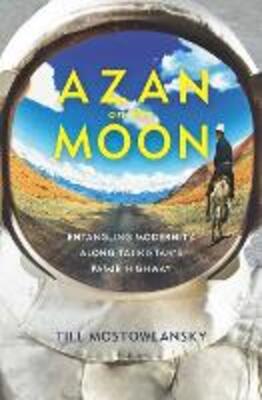 Azan on the Moon
Azan on the Moon

"Nel mio lavoro sul campo, mi sono imbattuto in una serie di narrazioni su una conversione all'Islam pubblicate in opuscoli popolari e più recentemente sono state condivise tramite telefono cellulare. Una di queste narrazioni sostiene che l'astronauta americano Neil Armstrong, il primo uomo sulla luna, si convertì all'Islam dopo essersi reso conto di aver sentito l'azano quando calpestò la luna.
Per i miei interlocutori, questa narrazione concorda meravigliosamente con il paesaggio lunare e l'aumento di gesti di pietà lungo l'autostrada del Pamir. Molte persone nella regione sono state socializzate attraverso il mondo della tecnologia; sono meccanici, ingegneri e costruttori di strade. Erano attratti dall'idea che la migliore tecnologia moderna, che aveva permesso agli esseri umani di volare sulla luna, alla fine avrebbe portato a Dio."
Dalla intervista all'autore in: Voices on Central Asia
Azan on the Moon is an in-depth anthropological study of people’s lives along the Pamir Highway in eastern Tajikistan. Constructed in the 1930s in rugged high-altitude terrain, the road fundamentally altered the material and social fabric of this former Soviet outpost on the border with Afghanistan and China. The highway initially brought sentiments of disconnection and hardship, followed by Soviet modernization and development, and ultimately a sense of distinction from bordering countries and urban centers that continues to this day.
Based on extensive fieldwork and through an analysis of construction, mobility, technology, media, development, Islam, and the state, Till Mostowlansky shows how ideas of modernity are both challenged and reinforced in contemporary Tajikistan. In the wake of China’s rise in Central Asia, people along the Pamir Highway strive to reconcile a modern future with a modern past. Weaving together the road, a population, and a region, Azan on the Moon presents a rich ethnography of global connections.
|